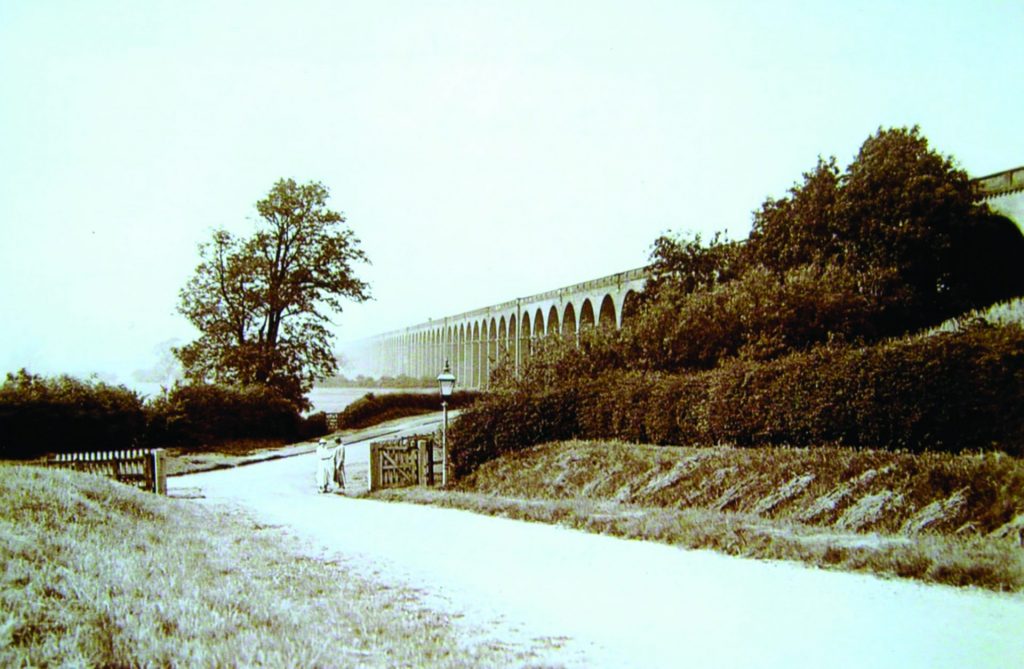Underneath the Railway Arches
Fascination for Railways…
Railways have always held a fascination for me right from an early age when, along with my parents and brother, I lived close to the Great Northern Railway line that ran at the bottom of our garden in Wintersdale Road near Thurnby, Leicester.
Waving to the holiday makers
I would stand on the five-bar gate which was previously a level crossing and when I heard one of the steam locomotives approaching I would often wave to the holiday makers in the maroon coloured coaches en-route to the east coast heading for their annual holiday destinations or to the smartly dressed guard who occupied the platform on the guard’s van at the rear of a goods train.
Getting a shout ‘hello!’
Sometimes if the train was travelling slowly enough the guard would wave back and shout ‘hello’. This affinity with the railways was cemented even further when I discovered, through family research, that my great grandfather, Robert Hatfield, was the station master at Clifton Mill Station in the 1880’s which was on the now disused line between Market Harborough and Rugby.

Recently I came across this old photograph from the 1920s that not only stirred my childhood memories of that bygone age of steam but also reminded me of the first time I saw this awe inspiring structure.
I was 17 at the time and learning to drive when my instructor, who lived nearby in Medbourne, took me out in their car to navigate the country roads around the villages near to Uppingham. Suddenly I found myself driving under one of the impressive arches of the Welland Valley, Harringworth (or Seaton) Viaduct as shown in this picture.
Grade Two listed Viaduct
I later discovered that it was Grade Two listed and stretched across acres of farmland measuring 1,275 yards long and incorporating 82 arches each with a 40ft span.
I believe it to be the largest masonry viaduct across a valley in the UK. It was built using a total of 30 million bricks. Construction started in 1875 on land owned by Lt. Col. Thomas Tryon (1830-1888) of Bulwick Hall, Northants. He was Lt. Col. in Her Majesty’s Regiment of 7th Fusiliers.
Still in use
The viaduct is on the Oakham to Kettering line between Corby and Manton junction where it joins the Leicester to Peterborough line. The line is generally used by freight trains and steam specials. However, in 2009 a single daily return passenger service was introduced by East Midland trains between Melton Mowbray and London St Pancras, via Corby. The viaduct was designed by William Henry Barlow and built at a cost of £12,000. It was opened in 1880.
Surprising route
To my surprise, when I was travelling from Leicester to London, many years ago, the train I boarded left London Road station and headed north instead of south. Initially I thought I had boarded the wrong train but just after the train moved off they announced that, due to work being carried out on the line near Market Harborough, the train had to head towards Melton Mowbray before it could travel south. This was a journey that will forever be indelibly printed in my memory.
Soaring over the Valley
As the train approached and crossed the viaduct, I thought for one moment that I was in a plane soaring above the Welland Valley. The excitement rippled through the carriage and my fellow passengers agreed with me that the experience we all encountered was to be recommended to anyone who is given the chance to travel along this iconic line.
This feat of Victorian engineering is a part of history that not only is in use today but is here on our doorstep in Leicestershire for all to admire.
Ironically since moving to Kibworth 40 years ago, I find myself, once again, living next to a railway but instead of it being the Great Northern Line, as in my youth it is now the Midland Main Line.
Glyn Hatfield




 ‘Pink Shop’ has Successful Grand Opening
‘Pink Shop’ has Successful Grand Opening

